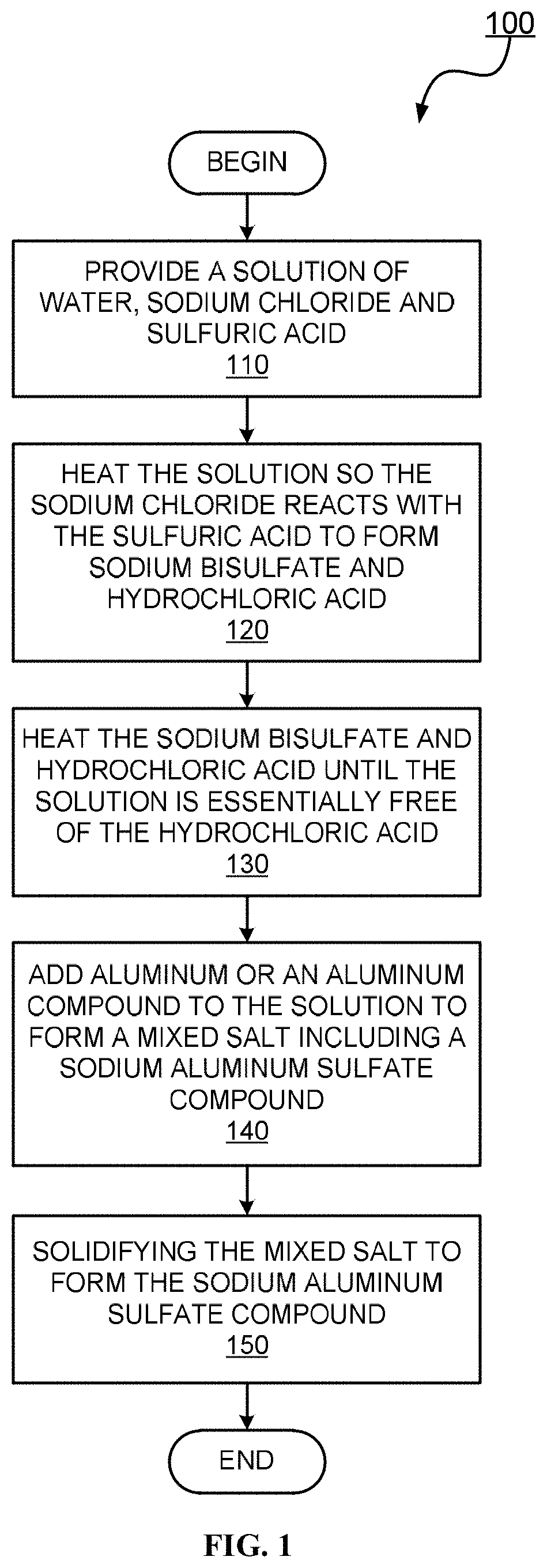Sodium aluminum sulfate for use in animal litters
a technology of sodium bisulfate and animal litter, which is applied in the field of mixed salts of sodium and aluminum, can solve the problems of affecting the health of animals, and sodium bisulfate does not have the ability to bind phosphorous
- Summary
- Abstract
- Description
- Claims
- Application Information
AI Technical Summary
Benefits of technology
Problems solved by technology
Method used
Image
Examples
example 1
[0038]The salt (sodium bisulfate) and alumina was reacted with the sulfuric acid to form a salt slurry that immediately began to release hydrogen chloride. The ratio of Sodium Bisulfate to dry Alum (aluminum sulfate) was chosen to be 40:60 wt %. The slurry was heated and allowed to react until all of the salt had dissolved. At this point the addition of the hydrate and water began to form a solution. Once the solution began to solidify, the solution was poured into a mold and allowed to cool. Once cool, the product produced a white odorless solid that was difficult to grind. The material wanted to smear rather than grind. The processing parameters are shown in Table 2.
example 2
[0039]Followed the sequence used for Example 1 except changed the ratio of Sodium Bisulfate to alum and used a ratio of 20:80. The sample produced a white odorless solid that was easy to grind. The processing parameters are shown in Table 3.
example 3
[0040]Repeated the sequence used for Example 1 with the ratio of Sodium Bisulfate to alum of 40:60. The sample produced the same results as Example 1. The processing parameters are shown in Table 4.
PUM
| Property | Measurement | Unit |
|---|---|---|
| temperature | aaaaa | aaaaa |
| temperature | aaaaa | aaaaa |
| atmospheric humidity | aaaaa | aaaaa |
Abstract
Description
Claims
Application Information
 Login to view more
Login to view more - R&D Engineer
- R&D Manager
- IP Professional
- Industry Leading Data Capabilities
- Powerful AI technology
- Patent DNA Extraction
Browse by: Latest US Patents, China's latest patents, Technical Efficacy Thesaurus, Application Domain, Technology Topic.
© 2024 PatSnap. All rights reserved.Legal|Privacy policy|Modern Slavery Act Transparency Statement|Sitemap



